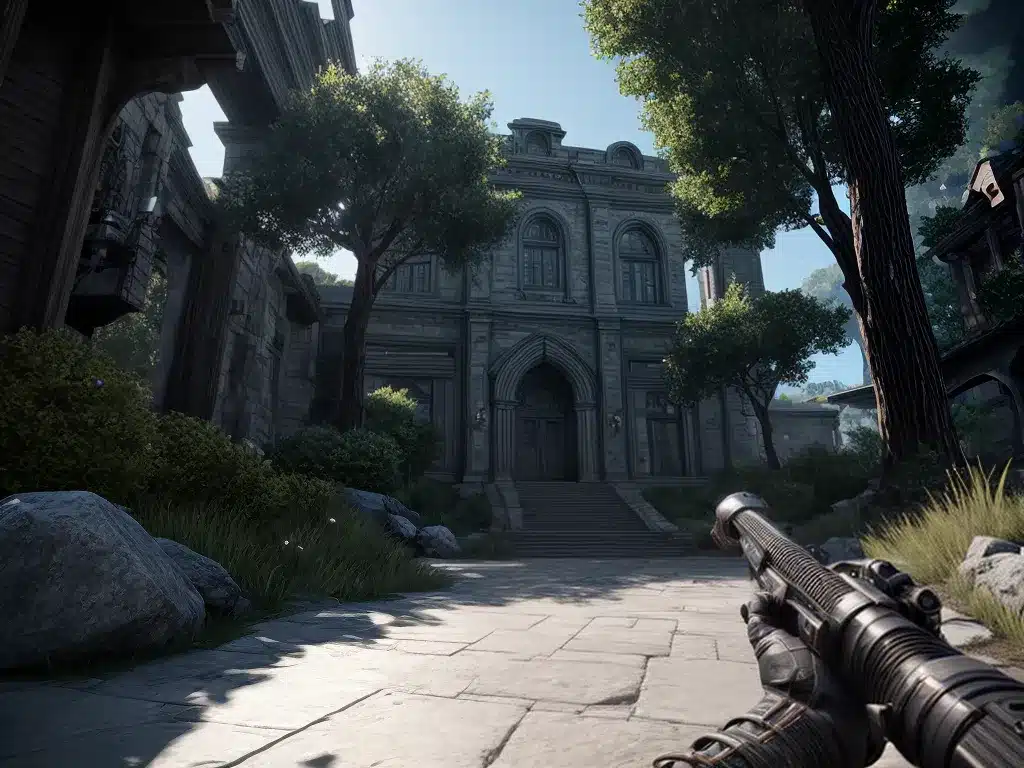
Introduction
Unreal Engine 5 (UE5) is the latest iteration of Epic Games’ popular game engine and development suite. Revealed in early 2022, UE5 aims to push real-time graphics and interactivity to unprecedented levels on next-generation hardware like PlayStation 5 and Xbox Series X/S.
UE5 brings major technical advancements that enable far greater visual fidelity and more dynamic worlds. Key features like Nanite virtualized geometry, Lumen dynamic global illumination, and Temporal Super Resolution (TSR) upsampling allow developers to achieve film-quality assets rendered in real-time.
Together these technologies mark a major leap forward for real-time graphics, and pave the way for more immersive, reactive and photorealistic game worlds.
Nanite Virtualized Geometry
One of UE5’s banner features is Nanite virtualized geometry. Nanite allows artists to create game assets with an extraordinary amount of geometric detail while optimizing them to run efficiently on next-gen hardware.
Traditionally, game engines have limits on geometric complexity. Artists must manually reduce detail in models to optimize performance. Nanite removes this constraint by intelligently streaming and scaling geometry as needed.
Developers can now import film-quality source assets with millions or billions of polygons, and Nanite will handle optimizing them for real-time rendering. This unlocks unprecedented levels of realism, while speeding up asset production.
Nanite could allow open world landscapes dotted with extremely detailed geometry. Characters and creatures can also display finer details for more lifelike results. This tech significantly pushes the boundaries of real-time detail and fidelity.
Lumen Dynamic Global Illumination
Lumen is UE5’s lighting architecture that enables fully dynamic global illumination in large game worlds. This means lighting can realistically interact with materials and change based on time, weather and player actions.
Previous real-time global illumination solutions used pre-baked lighting or localized effects like ray tracing. But Lumen enables dynamic lighting at far larger scales, such as sprawling open worlds.
Lumen uses a mix of virtual ray tracing, mesh area lights, and sparse voxel irradiance volumes to approximate global lighting effects in real-time. This allows for cinematic mood and atmosphere as lights and shadows shift naturally.
Developers can create more immersive, living worlds that respond to players. Lumen reduces the need for pre-baked lighting, making it faster to iterate scenes and lighting design.
Temporal Super Resolution (TSR)
To maximize next-gen fidelity, UE5 utilizes Temporal Super Resolution (TSR), a powerful upsampling technique. TSR uses machine learning to extrapolate higher resolution images from lower res inputs.
TSR allows developers to render games at lower resolutions (1080p – 1440p) then upsample and output at 4K or higher resolutions while preserving image quality.
This significantly reduces rendering workloads and allows more GPU headroom for effects like ray tracing. Yet games can still target high 4K/8K resolutions with TSR for super sharp, ultra HD images.
TSR upsampling trains against high resolution film images to preserve detail in edge reconstruction and texture outputs. This machine learning approach makes the upsampled images more convincing.
Combined with Nanite, Lumen and ray tracing, TSR lets UE5 games convincingly target photorealism in high resolutions like 4K/8K on next-gen hardware.
Implications for Next-Gen Games
The major graphics enhancements in Unreal Engine 5 will empower developers to create more immersive, film-quality experiences on PS5, Xbox Series X/S and PCs.
Nanite virtualized geometry removes limits on 3D model complexity while optimizing assets on the fly. Artists can leverage vast amounts of geometric detail for far more realistic characters, creatures, and environments.
Lumen dynamic global illumination enables lighting to naturally react to time and player actions. Game worlds can feel more alive and cinematic as light realistically shifts across materials.
And TSR upsampling unlocks 4K/8K quality on optimized lower resolution renders. Combined with ray tracing, this allows for photorealism at high resolutions and frame rates.
Together these technologies suggest a new level of real-time graphical fidelity in UE5 games. More dynamic, detailed and responsive game worlds are possible, with real-time cinematic lighting and photoreal visuals.
UE5 aims to massively raise the bar for graphics, immersion and realism in next-gen games. Expect to see these enhancements taken to their full potential in upcoming UE5 titles across various genres.
Closing Thoughts
Unreal Engine 5 is an exciting step forward for real-time graphics. Cutting edge features like Nanite, Lumen and TSR offer a glimpse at the stunningly realistic worlds that next-gen hardware enables.
Epic is delivering a powerful toolbox for developers to create unprecedented visuals and dynamism in games. As more studios get hands-on with UE5, we should see some groundbreaking new interactive experiences that maximize this technology.
The next generation of gaming looks to be the most visually thrilling yet. Unreal Engine 5 provides the cutting edge tools to fully deliver on that promise. We can expect games that blur the line between pre-rendered CGI and real-time graphics even further.












